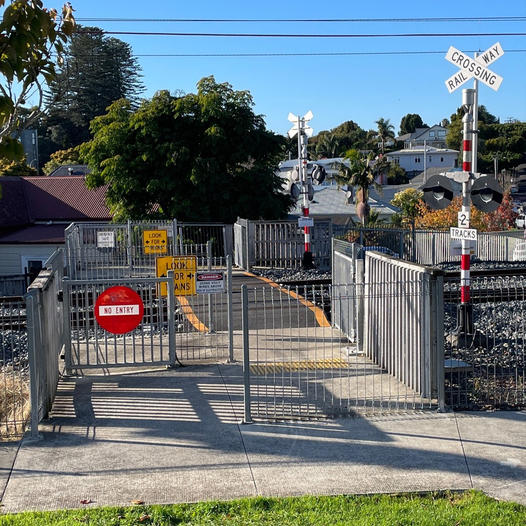Auckland Transport (AT) is making some big moves to keep us all safer as we gear up for the opening of the City Rail Link (CRL). In a bid to get everything in place, AT is starting to remove several pedestrian level crossings around Auckland. The plan involves taking out seven of these crossings, all in the name of safety and ticking the boxes for the NZ Transport Agency, which is necessary for ramping up train frequencies once the CRL is up and running.
Now, you might be wondering why these crossings are being removed. They tell us that it’s all about reducing the risk of serious injuries or worse. Even though we haven’t seen many recent incidents at some of these crossings, there have been plenty of close calls and some unfortunate collisions across our rail network. AT wants to nip these issues in the bud, ensuring everyone can get around safely.
They are saying this isn’t just a random decision. It’s part of a bigger plan to upgrade our rail network. Along with the CRL, there are several other projects in the pipeline, like the Electrification from Papakura to Pukekohe (P2P), KiwiRail’s Rail Network Rebuild, and the Third Main Line. These upgrades are all about supporting more frequent train services. We’re talking more AT passenger trains, KiwiRail freight trains, and regional services to places like Hamilton and Wellington. With the new rail network and timetables coming into play when the CRL opens, we’re expecting train frequencies to double in some areas. That means more trains and more frequent barrier closures at level crossings, which could lead to longer waits for both pedestrians and drivers.
While more trains might sound great for getting around, they also bring safety challenges. Longer waits at level crossings could tempt some folks to take risks, like darting across the tracks when they shouldn’t. KiwiRail has already seen a rise in near misses and serious incidents at level crossings over the past year. Plus, with our city growing and more people living near train stations, these risks are only going up. A lot of our rail crossings were built when there was far less traffic, both on foot and by train. They’re just not designed to handle the current or future levels of rail traffic. That’s why AT has rolled out the Level Crossing Removal Programme, aiming to phase out all level crossings over the next 10 to 30 years, starting with pedestrian-only crossings.
The first phase of this programme focuses on seven pedestrian-only crossings. This step is crucial for getting the green light from the New Zealand Transport Agency, to boost train frequencies once the CRL opens. The removals align with existing safety regulations and are a key part of AT’s strategy to cut risks.
Taking out these pedestrian level crossings is a big deal for safety. Even with barrier arms and automatic gates, there are still risks. Removing these crossings is a proactive move to prevent accidents before train services ramp up. There are some options that are on the table. AT looked at four options for each crossing:
- Crossing Removal: Prioritizing safety and considering alternative routes that offer better value for money.
- Bridges and Underpasses: While these would be great for safety, current budget constraints make them a no-go. They’re expensive and time-consuming to build, which would delay new rail services.
- Automatic Safety Gates: These can help but aren’t foolproof. Some people misuse the release buttons, and prams can get stuck on the tracks.
- No Changes: Not an option due to the high risk of serious injury or death. Safety can’t be compromised, especially when there are safer routes available.
AT says that the move to remove pedestrian level crossings is a crucial step towards a safer rail network as we gear up for more frequent train services. By tackling these safety concerns head-on, AT is working to create a more secure environment for all of us as the City Rail Link and other upgrades come online. This initiative shows AT’s commitment to providing a safer, more efficient transportation system for our growing city. So, next time you’re near a crossing, know that these changes are all about keeping you safe on your travels.

